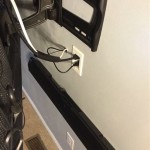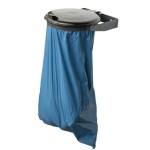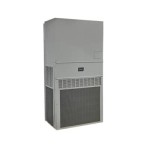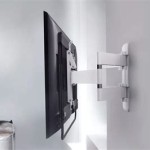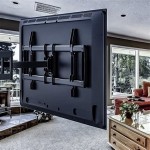Wall Mounted Room AC Units: A Comprehensive Overview
Wall mounted room air conditioning units, commonly referred to as mini-split systems, provide a localized cooling solution for individual rooms or zones within a building. These systems offer an alternative to central air conditioning, particularly in situations where ductwork installation is impractical or cost-prohibitive. This article offers a detailed exploration of wall mounted AC units, covering their components, operation, advantages, disadvantages, installation considerations, maintenance requirements, and selection criteria.
Components and Operation of Wall Mounted AC Units
A typical wall mounted AC unit consists of two primary components: an indoor unit and an outdoor unit. The indoor unit, commonly called the air handler, is mounted on an interior wall within the space to be cooled. The outdoor unit, known as the condenser, is placed outside the building, typically on a ground-level pad or mounted to an exterior wall. These two units are connected by a conduit containing refrigerant lines, power cables, and a drain line.
The operational principle of a wall mounted AC unit mirrors that of a standard air conditioning system. The refrigerant, a working fluid with a low boiling point, circulates between the indoor and outdoor units. In the indoor unit, the refrigerant absorbs heat from the room air as it evaporates. A fan blows air across the cooling coil, distributing the cooled air into the room. The refrigerant, now in a gaseous state, travels to the outdoor unit.
In the outdoor unit, the refrigerant is compressed, increasing its temperature and pressure. This high-pressure, high-temperature gas then flows through a condenser coil, where it releases heat to the outside air and reverts to a liquid state. This high-pressure liquid refrigerant then flows back to the indoor unit, completing the cycle. A compressor, typically located in the outdoor unit, drives this refrigerant circulation process.
The drain line connected to the indoor unit removes condensation that forms on the cooling coil. This condensation, a result of moisture in the air condensing on the cold coil, is typically directed to an exterior drain or a condensate pump, depending on the installation location.
Advantages of Wall Mounted AC Units
Wall mounted AC units present several advantages over traditional central air conditioning systems and window units. These advantages contribute to their growing popularity in both residential and commercial applications.
Zoned Cooling: One of the primary benefits of wall mounted AC units is their ability to provide zoned cooling. This allows for independent temperature control in different rooms or areas of a building. This feature is particularly useful in homes or offices where occupants have varying temperature preferences or where certain areas are infrequently used. By only cooling the occupied zones, energy consumption can be significantly reduced.
Energy Efficiency: Modern wall mounted AC units often incorporate advanced energy-saving features such as inverter technology. Inverter compressors adjust their speed to match the cooling demand, resulting in more consistent temperatures and reduced energy consumption compared to traditional on-off compressors. Many models are also ENERGY STAR certified, indicating that they meet or exceed minimum energy efficiency standards.
Quiet Operation: Wall mounted AC units are generally quieter than window units, as the noisy compressor is located outside the building. The indoor units are designed with noise reduction features, such as sound-dampening materials and optimized fan designs, to minimize disruption. This makes them suitable for bedrooms, offices, and other noise-sensitive environments.
Space Saving: Unlike window units, wall mounted AC units do not obstruct windows or require window modifications. The indoor units are slim and compact, blending seamlessly into the room's decor. The outdoor units can be discreetly placed outside the building, minimizing visual impact.
Improved Air Quality: Many wall mounted AC units include air filters that remove dust, pollen, and other airborne particles from the air. These filters improve indoor air quality and can be particularly beneficial for individuals with allergies or respiratory sensitivities. Some models also incorporate advanced filtration systems, such as activated carbon filters or HEPA filters, for enhanced air purification.
Ease of Installation: While professional installation is generally recommended, the installation process for wall mounted AC units is typically less disruptive than installing ductwork for a central air conditioning system. The connection between the indoor and outdoor units requires only a small hole in the wall, minimizing structural alterations.
Disadvantages of Wall Mounted AC Units
Despite their numerous advantages, wall mounted AC units also have some drawbacks that should be considered before making a purchase.
Initial Cost: The initial cost of wall mounted AC units can be higher than that of window units or even some central air conditioning systems, especially when multiple units are required to cool an entire building. However, the long-term energy savings and other benefits may offset this higher initial cost.
Installation Requirements: While the installation process is generally less disruptive than installing ductwork, it still requires professional expertise to ensure proper refrigerant line connections, electrical wiring, and drainage. Improper installation can lead to reduced performance, increased energy consumption, and potential system malfunctions.
Aesthetic Considerations: Some individuals may find the appearance of the indoor unit on the wall less aesthetically pleasing than a central air conditioning system with concealed ductwork. However, many manufacturers offer stylish models with sleek designs that can blend well with various interior decor styles.
Limited Cooling Capacity: Wall mounted AC units are typically designed to cool individual rooms or zones. While multi-zone systems are available, they may not be as effective at cooling an entire building as a properly sized central air conditioning system. The cooling capacity of the unit should be carefully matched to the size and characteristics of the space to be cooled.
Maintenance Requirements: Wall mounted AC units require regular maintenance, including cleaning the air filters, cleaning the coils, and inspecting the refrigerant lines. Neglecting maintenance can lead to reduced performance, decreased energy efficiency, and potential system failures. Professional maintenance service is recommended to ensure optimal performance and longevity.
Installation Considerations for Wall Mounted AC Units
Proper installation is crucial for the efficient and reliable operation of a wall mounted AC unit. Several factors should be considered during the installation process.
Unit Placement: The indoor unit should be placed in a location that allows for optimal airflow and circulation. Avoid placing the unit behind furniture or in areas where airflow is obstructed. The outdoor unit should be located in a well-ventilated area, away from direct sunlight and obstructions. Follow the manufacturer's recommendations for minimum clearance requirements around the outdoor unit.
Electrical Requirements: Wall mounted AC units require a dedicated electrical circuit with the appropriate voltage and amperage. Consult a qualified electrician to ensure that the electrical system is adequate and that the unit is properly grounded. Adhere to all applicable electrical codes and regulations.
Refrigerant Line Connections: The refrigerant lines connecting the indoor and outdoor units must be properly sealed and insulated to prevent leaks and ensure efficient refrigerant flow. Use appropriate tools and techniques to make leak-free connections. A vacuum pump should be used to evacuate the refrigerant lines before charging the system with refrigerant.
Drainage: The drain line must be properly sloped to allow for gravity drainage of condensation. If gravity drainage is not possible, a condensate pump may be required to pump the condensation to a suitable drain location. Ensure that the drain line is not blocked or obstructed.
Wall Mounting: The indoor unit must be securely mounted to the wall using appropriate mounting hardware. The wall must be strong enough to support the weight of the unit. Follow the manufacturer's instructions for proper wall mounting techniques.
Maintenance Requirements for Wall Mounted AC Units
Regular maintenance is essential for maintaining the performance and extending the lifespan of a wall mounted AC unit. The following maintenance tasks should be performed on a regular basis.
Air Filter Cleaning: Clean the air filters at least once a month, or more frequently in dusty environments. Dirty air filters restrict airflow, reducing cooling efficiency and increasing energy consumption. Washable air filters can be cleaned with soap and water. Disposable air filters should be replaced regularly.
Coil Cleaning: Clean the indoor and outdoor coils at least once a year. Dust and debris can accumulate on the coils, reducing their ability to transfer heat. Use a coil cleaner specifically designed for air conditioning systems. Avoid using harsh chemicals or abrasive cleaners.
Refrigerant Line Inspection: Inspect the refrigerant lines for leaks or damage. If leaks are detected, contact a qualified technician to repair the leak and recharge the system with refrigerant. Low refrigerant levels can reduce cooling performance and damage the compressor.
Drain Line Cleaning: Clean the drain line to prevent clogs and ensure proper drainage. A clogged drain line can cause water damage and promote mold growth. Use a wet/dry vacuum to clear any blockages in the drain line.
Professional Service: Schedule a professional maintenance service at least once a year. A qualified technician can inspect the system for potential problems, perform necessary repairs, and ensure that the system is operating at peak efficiency.
Selection Criteria for Wall Mounted AC Units
Choosing the right wall mounted AC unit involves considering several factors to ensure that the unit meets the specific cooling needs of the space.
Cooling Capacity (BTU): The cooling capacity of the unit, measured in British Thermal Units (BTU), should be matched to the size and characteristics of the space to be cooled. Consider factors such as room size, insulation levels, window area, and occupancy levels. A unit that is too small will not adequately cool the space, while a unit that is too large will cycle on and off frequently, wasting energy.
Energy Efficiency (SEER): The Seasonal Energy Efficiency Ratio (SEER) is a measure of the unit's energy efficiency. A higher SEER rating indicates greater energy efficiency. Look for models with a SEER rating of 15 or higher to maximize energy savings. ENERGY STAR certified models meet or exceed minimum energy efficiency standards.
Features and Functions: Consider the features and functions offered by the unit, such as adjustable fan speeds, programmable timers, sleep mode, and remote control. Look for models with features that meet the specific needs and preferences of the occupants.
Noise Level: Check the noise level of the indoor and outdoor units. Look for models with low noise ratings, especially if the unit will be installed in a bedroom or other noise-sensitive environment. Consider models with sound-dampening features.
Brand Reputation and Warranty: Choose a reputable brand with a solid warranty. A longer warranty provides peace of mind and protection against potential defects or malfunctions. Research customer reviews and ratings to assess the reliability and performance of the unit.
Installation Costs: Obtain quotes from multiple installers to compare installation costs. Choose a qualified and experienced installer to ensure proper installation and avoid potential problems. Consider the cost of any necessary electrical upgrades or modifications.

Wall Mounted Single Split Hvac Business Lg Global

Tips For Wall Mounted Air Conditioning Installation Evergreen

Air Conditioning For Single Room Hitachi

Wall Mounted Air Conditioner Carrier

27000 Btu 2 Zone Mini Split Air Conditioner 19 Seer2 Wifi Enabled Duct Chairliving

Wall Mounted Air Conditioner Tiwm Series York Split

Fyhale Ductless Air Conditioner Mini Split Ac Heating System Portable Conditioners No Windows Needed Wall Mounted Unit With Remote Control Timer For Bedroom Living Room Wal Com

Split Multi Type Air Conditioners Offers Superior Performance Energy Efficiency And Comfort In Stylish Solutions Conforming To All Interior Spaces Lifestyles Conditioning Refrigeration Daikin Global

Small Air Conditioners Uk Powerful Stylish Cooling For Compact Spaces

Electriq Iqool Multi Split 2 X 12000 Btu S Wall Mounted Air Conditioner With Heat Pump Pipe Kits Included From Aircon Direct

